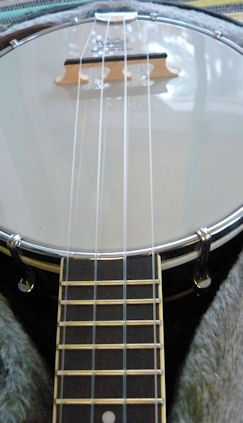ichadwick
Well-known member
Any luthiers have a comment on the relative merits of different banjo uke bridges?
I've read two-foot bridges are better with nylon strings than the typical three-foot style.
What about materials? Mine comes with the Grover maple/ebony top (3 foot) but I've read solid maple may be better for nylon.
What about bone or graphite?
I'm also trying to find a thicker, denser bridge to give it a warmer sound. Any suggestions for a good source?
Mine is 5/8" and the action from frets 1-12 is great, but it has a little tinny buzz at 15, so would a taller (11/16?) bridge help that without hurting the rest of the action?
I've read two-foot bridges are better with nylon strings than the typical three-foot style.
What about materials? Mine comes with the Grover maple/ebony top (3 foot) but I've read solid maple may be better for nylon.
What about bone or graphite?
I'm also trying to find a thicker, denser bridge to give it a warmer sound. Any suggestions for a good source?
Mine is 5/8" and the action from frets 1-12 is great, but it has a little tinny buzz at 15, so would a taller (11/16?) bridge help that without hurting the rest of the action?



